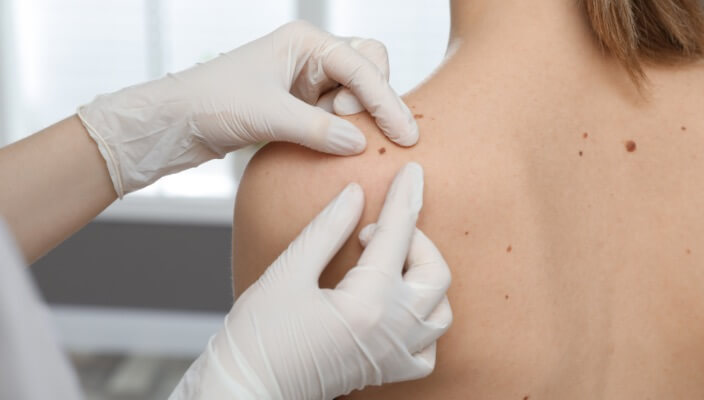Seborrheic keratosis is a common skin condition characterized by non-cancerous growths on the skin, often appearing as brown, black, or light tan lesions. While these growths are generally harmless, they can cause cosmetic concerns for individuals. The good news is that advancements in technology have led to innovative treatments for seborrheic keratosis, enhancing effectiveness and patient experience. This article delves into the latest technologies available for Seborrheic Keratosis Treatment in Dubai.
Understanding Seborrheic Keratosis
Seborrheic keratosis is a benign skin growth that can vary in size, shape, and color. These growths are typically found on the face, chest, back, or scalp. While they do not require treatment, many individuals opt to remove them for aesthetic reasons or due to irritation. Understanding the characteristics of seborrheic keratosis helps in selecting appropriate treatment methods.
Advanced Laser Technologies
One of the most exciting advancements in treating seborrheic keratosis is the use of laser technology. Various types of lasers are employed to target and remove the growths effectively.
Ablative Lasers
Ablative lasers, such as carbon dioxide (CO2) lasers, work by vaporizing the outer layers of the skin where the keratosis is present. This method not only removes the lesions but also stimulates collagen production, promoting smoother skin and reducing the appearance of scars.
Non-Ablative Lasers
Non-ablative lasers, such as pulsed dye lasers, target the deeper layers of the skin without damaging the outer layer. These lasers work by heating the underlying tissue, which can help reduce the appearance of seborrheic keratosis while minimizing recovery time and discomfort.
Cryotherapy Techniques
Cryotherapy, or cryoablation, involves the application of extreme cold to destroy abnormal tissue. In the case of seborrheic keratosis, liquid nitrogen is often used to freeze the growths. This technique is quick and effective, typically requiring only a few minutes for each lesion. As the treated area heals, the keratosis gradually falls off, leaving the skin smooth.
Advantages of Cryotherapy
The primary advantage of cryotherapy is its ability to treat multiple lesions in a single session. Additionally, the procedure is minimally invasive, leading to shorter recovery times and reduced risk of scarring compared to more invasive surgical methods.

Radiofrequency Ablation
Radiofrequency ablation is another innovative technology used to treat seborrheic keratosis. This technique utilizes high-frequency electrical currents to heat and destroy the targeted skin growths. The precision of radiofrequency devices allows for minimal damage to surrounding tissues, enhancing safety and recovery.
The Procedure
During a radiofrequency ablation procedure, a thin probe is inserted into the lesion, delivering controlled heat to the keratosis. The growths are removed without the need for incisions or significant downtime. Patients can typically return to their daily activities shortly after the treatment.
Intense Pulsed Light (IPL) Therapy
Intense Pulsed Light (IPL) therapy is a non-invasive treatment that uses broad-spectrum light to target pigmentation and vascular issues within the skin. While primarily used for various skin conditions, IPL can also be effective in reducing the appearance of seborrheic keratosis.
How IPL Works
The light emitted during IPL treatment penetrates the skin and is absorbed by the pigmented cells in the keratosis. This absorption leads to the breakdown of the pigmentation, gradually fading the lesions over time. Multiple sessions may be necessary for optimal results, but the procedure is gentle and typically requires no downtime.
Topical Treatments and Innovations
In addition to advanced technologies, topical treatments are also being explored for managing seborrheic keratosis. New formulations that incorporate ingredients such as alpha hydroxy acids (AHAs) and retinoids can help soften and exfoliate the lesions, making them less noticeable.
Emerging Topical Therapies
Research continues to uncover new topical therapies that may provide effective solutions for individuals with seborrheic keratosis. These treatments aim to improve the texture and appearance of the skin while promoting healthy cell turnover.
Combination Approaches
Many practitioners in Dubai are now utilizing a combination of these technologies for optimal results. By tailoring treatment plans to the individual's specific needs, combining laser treatments with topical therapies can enhance the overall effectiveness.
Personalized Treatment Plans
The rise of personalized medicine in dermatology allows for a more comprehensive approach to treating seborrheic keratosis. By considering factors such as the patient’s skin type, the size and location of the lesions, and their aesthetic goals, practitioners can design treatment plans that deliver the best outcomes.
Conclusion
The landscape of seborrheic keratosis treatment is evolving, with advanced technologies providing effective solutions for individuals seeking to address their skin concerns. From laser therapies to cryotherapy and innovative topical treatments, Dubai offers a range of options for those looking to improve their skin’s appearance. As research and technology continue to advance, patients can expect even more effective and personalized treatments for seborrheic keratosis in the future.






Comments